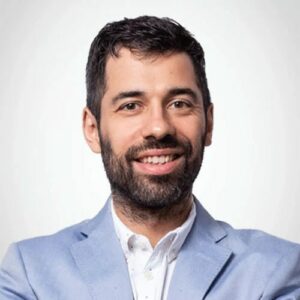Eighty-eight percent of online customers — or would-be customers — say they won’t visit a website again after having a bad user experience with it. Meanwhile, 91% of customers with poor experiences won’t leave feedback — they will just disappear altogether, never to return.
User experience (UX) is fundamental to your success as a business and brand. And bringing it to the forefront of your strategic plans starts with setting ambitious yet realistic UX goals.
UX Design Explained
Although it’s called design, UX is about far more than aesthetics. Visual appeal is certainly part of it, but it actually encompasses the entirety of user interactions with your product. This is a comprehensive process that involves usability, performance, accessibility, practicality, and overall functionality.
Today, UX designers are pivotal to the software and web development process, as businesses are increasingly aware of the competition within the market. Ultimately, your goal is to offer an exemplary experience to your users and would-be users, one that is relevant to and solves problems for them. This, in turn, helps build brand loyalty, prompting consumers to return to you again and again.
A UX designer must be technically skilled and possess a number of soft skills as well, such as the ability to communicate and exercise empathy with their audience. The process involves extensive research, wireframing, strategizing, product development, prototyping, designing, and testing.
6 Tips for Setting UX Goals
Great UX starts with clearly defined goals. How do you go about establishing these objectives? Here’s what to do.
1. Think Big Picture
UX goals don’t exist in a silo. They must complement, support, and further your larger strategic goals. It’s important to align them with your organization’s mission, values, and overarching objectives.
Additionally, you must consider what it will take to accomplish your projects. What is the process behind them? What are you looking to achieve? Which problems are you solving? How will you and your team realize them? How will you test and evaluate them?
Remember to establish key performance indicators (KPIs), which will serve as metrics to evaluate your progress and outcomes. This, too, will help you think in terms of the big picture and what you should do — or not do — the next time around.
2. Consider the W’s
Who, what, when, why, and how: these are all critical considerations when it comes to UX. Let’s take a closer look:
- Who: Who are your target users? It helps to create personas to determine their wants, needs, likes, and dislikes.
- What: What kind of product are you building? What is it meant to do? What will it achieve and resolve for the user?
- When: When is your team looking to bring the product to market? Deadlines are an important factor in the UX process.
- Why: Why should or do people want to use this product? Why are you building it in the first place?
- How: How do you expect consumers to use it?
3. Be SMART
SMART goals are a framework that enables you to conceptualize your project and assess your incremental and overall progress toward achieving your outcomes. The acronym stands for:
- Specific: The goals should be well-defined and as niche as possible.
- Measurable: Consider how you will assess progress and outcomes. What measurement tool or tools will you use?
- Actionable/achievable: There must be specific things you are able to do in an effort to achieve your goals.
- Realistic: Your objectives must neither be too lofty nor too simple.
- Time-bound: There should be a timeframe within which you will accomplish these goals.
Using the framework will improve your chances of realizing positive outcomes.
4. Build Relationships with Team Members
While the providers of UX design services and their teams are the ones who shape the user experience, it is, indeed, the accountability of everyone involved in the project. That’s why it is so crucial to fortify your relationships with your team members — this way, you can ascertain that you’re collaborating to generate an optimal experience for your users. This will also contribute significantly to your process running more fluidly.
Moreover, think about all the skills and talents you will need to leverage in order to make the user experience the best it can be. In order to utilize them, you must collaborate with one another.
5. Embrace Flexibility
Things change. Ideas change. Projects change. Goals change.
This is an unfortunate part of the UX process, but it doesn’t have to derail your project. In order to formulate powerful, achievable — but ambitious — goals, you will need to accept that not everything is set in stone. You must embrace flexibility and be able to adapt. This is critical as your plans unfold. Software and web projects, after all, are creative at their core, and that means that there is no rigid structure or path to follow. So, you must keep an open mind.
6. Always Exercise Empathy
Empathy is the most pivotal part of the user experience process. Any UX designer must be able to empathize with the prospective user, and this must be foundational to any goals they set. So, it’s critical to have this at top of your mind whenever you’re planning, conceptualizing, researching, and considering.
What Makes a UX Goal Work?
UX goals must be central to your design thinking. But remember that they should fit in with the holistic development process, complementing, supporting, and upholding the entirety of your objectives.
The user is the most important person to and for your project. They are the one who will ultimately be, well, using the software or website, and therefore, your goals for the project should match their own goals. That, after all, is the core reason behind your entire work.






